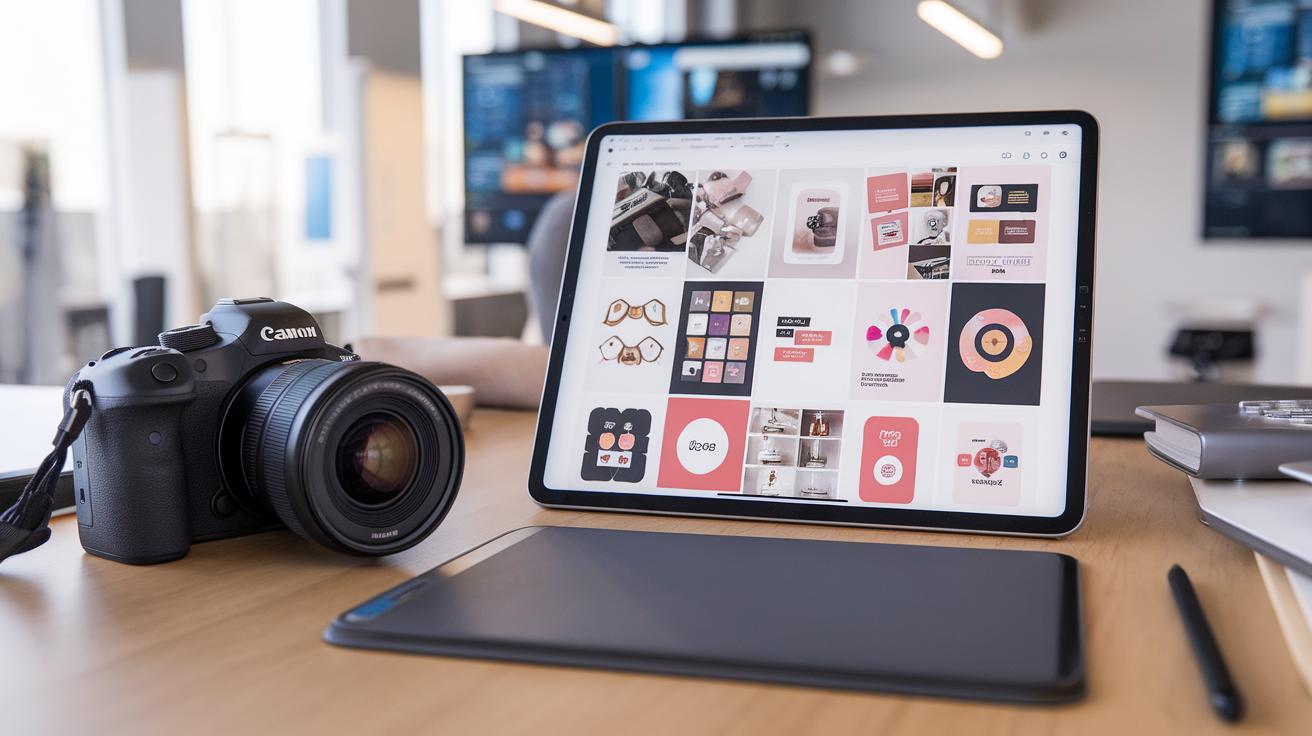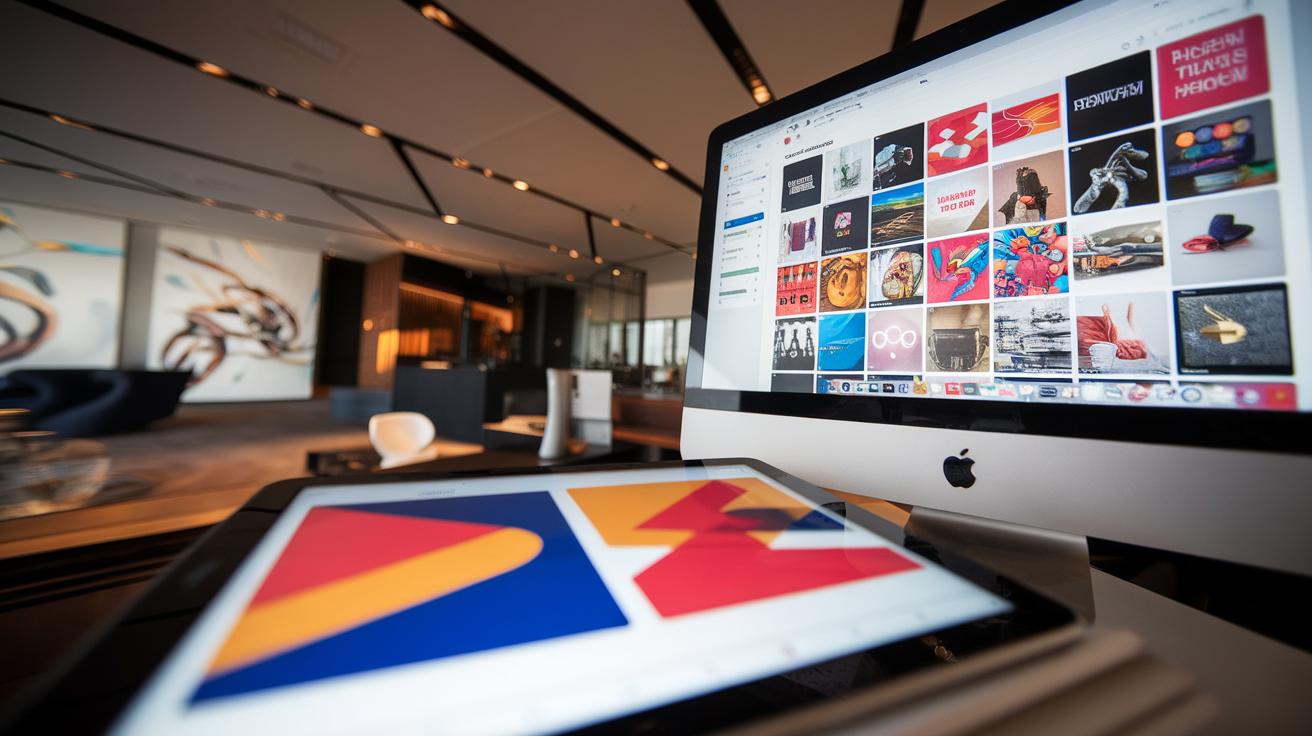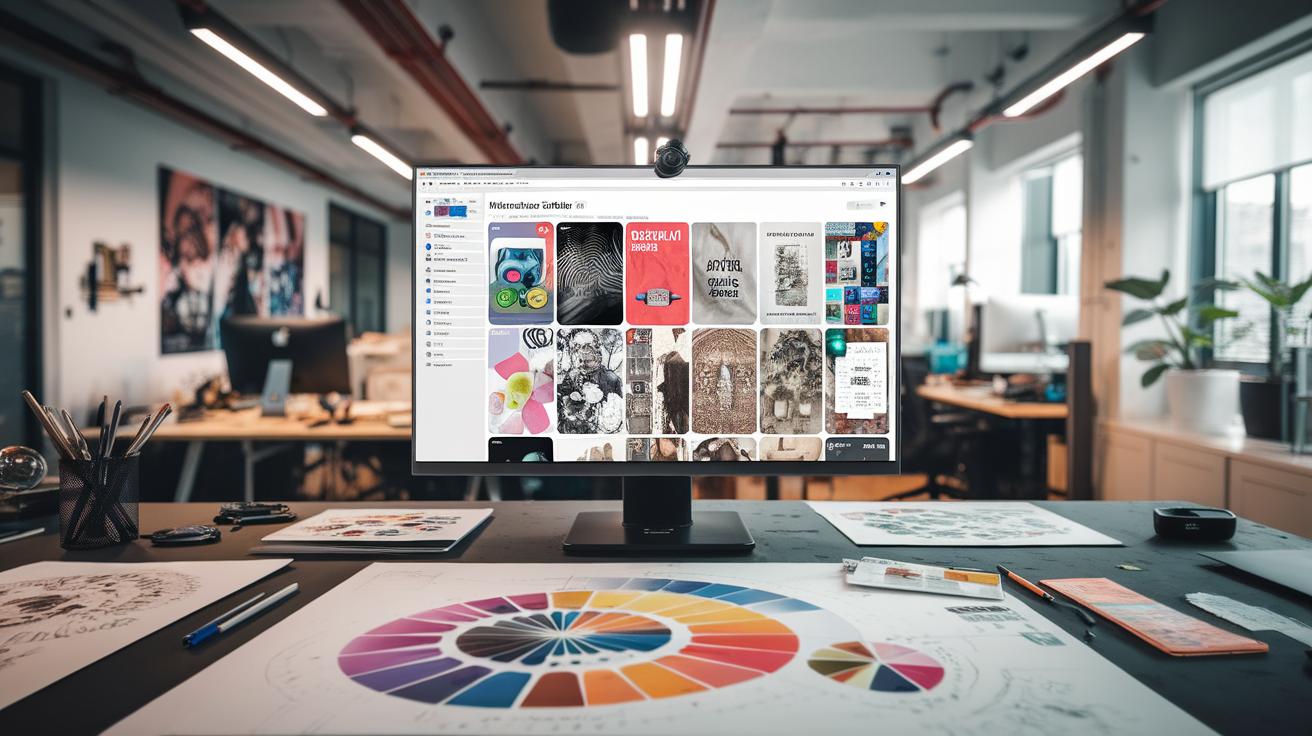Introduction
Pinterest, a platform originally designed for sharing collections of ideas and inspiration through visual content, has transformed into a pivotal tool for businesses aiming to enhance their visual marketing strategies. With its unique ability to drive traffic through visually appealing pins, Pinterest has become indispensable for marketers looking to create engaging content that resonates with their audience. As users browse for inspiration across diverse categories such as fashion, home decor, and recipes, the potential for brands to capture attention through strategic Pinterest design tactics is vast.
Understanding Pinterest design is crucial for businesses seeking to optimize their visibility and engagement on the platform. Effective design connects aesthetically pleasing content with targeted marketing strategies, ensuring that brands not only reach their desired audience but also convert engagement into tangible results. In this article, we delve into winning Pinterest design tips that can elevate your visual marketing strategy and help your brand stand out in a crowded digital landscape.
Understanding the Basics of Pinterest Design A Guide to Visual Aesthetics and Branding Consistency
Pinterest is fundamentally a visual platform, making the design elements crucial for marketing success. Understanding visual aesthetics is the first step to creating impactful pins that grab attention and drive engagement. The imagery you choose, the colors you utilize, and the overall branding consistency all weave together to form a cohesive visual story. This connection is fundamental to influencing how users perceive your brand and engage with your content.
Visual aesthetics encompass several components, including composition, balance, and focus. Ideally, every pin should have a clear focal point, guiding the viewer’s eye to the desired information or action. By maintaining a sense of balance and harmony within your designs, you create an inviting visual experience that encourages users to explore further. It’s essential to think critically about how these aesthetic choices align with your brand’s message and target audience.
Color theory plays a significant role in Pinterest design, as colors evoke emotions and influence decisions. Different shades can produce varying effects; for instance, warm colors such as reds and oranges can stimulate excitement or urgency, while cooler tones like blues and greens often evoke calmness or trust. Understanding the psychology behind color choices can greatly enhance the emotional impact of your pins, making them more relatable and shareable. Using a consistent color palette across all your pins not only promotes recognition but also reinforces your brand identity.
Branding consistency is another cornerstone of effective Pinterest design. A unified look and feel across your pins, including typography, style, and imagery, can help cultivate a strong brand presence. When users see visually cohesive content, it fosters recognition and builds trust. Consider creating a brand style guide that outlines your visual elements to ensure all team members generate content that aligns with your brand identity.
Mastering the basics of Pinterest design—visual aesthetics, color theory, and branding consistency—is vital for enhancing user engagement and maximizing the effectiveness of your visual marketing strategy. By weaving these foundational elements into your approach, you can create compelling, engaging content that resonates with your audience, encouraging them to save, share, and interact with your brand. This connection between design and user engagement is what transforms casual browsers into dedicated followers and customers.
Crafting HighQuality Images A Key Element in Pinterest Design
High-quality images serve as the backbone of successful Pinterest marketing strategies. As a platform that thrives on visual content, Pinterest requires images that not only capture attention but also convey a strong message about your brand. A visually striking image can evoke emotions, inspire actions, and ultimately influence users to engage with your content. Understanding how to select and create high-quality images is vital to a winning visual marketing strategy.
The Art of Selecting the Right Images
Choosing the right images involves more than merely picking visually pleasing pictures. Your images should resonate with your target audience and reflect your brand identity. To do this effectively:
- Know Your Audience: Understand what appeals to your target demographic by studying their preferences and interests.
- Select Relevant Content: Ensure that the images you choose are directly related to the content you’re promoting. Irrelevant images can lead to mistrust and reduced engagement.
- Utilize High-Resolution Photos: Low-quality images can harm your brand’s credibility. Aim for high-resolution photos that maintain clarity even when zoomed in.
The Power of Graphics and Design Tools
Incorporating graphics can enhance the appeal of your pins significantly. Graphics can range from infographics to overlays, offering additional context to your images. To create captivating graphics:
- Use Text Overlays Wisely: Adding text to images can clarify your message. Use clear, legible fonts and ensure the text complements rather than overwhelms the image.
- Create Collages or Infographics: Combining multiple images or presenting data visually can engage users more effectively than a single image. Ensure that the design is coherent and aesthetically pleasing.
- Leverage Design Tools: Utilize tools like Canva, Adobe Spark, or Visme to easily create stunning graphics. These platforms offer templates and user-friendly features that make design accessible to anyone.
High-quality images, thoughtfully selected and designed, significantly enhance your Pinterest marketing efforts. They not only attract attention but also build trust and encourage user interaction. By incorporating these tips into your strategy, you are well on your way to creating an effective visual marketing presence on this dynamic platform. Following this approach will naturally set the stage for optimizing pin descriptions to further enhance your visibility on Pinterest.
Optimizing Pin Descriptions for SEO
Enhancing Organic Reach Through Strategic Descriptions
The significance of pin descriptions on Pinterest transcends mere context; they serve as a pivotal element in driving organic reach and engagement. When users search for content, Pinterest operates much like a search engine, displaying pins that align with user queries. Thus, crafting well-optimized descriptions can dramatically improve visibility, making it easier for your content to be discovered by the right audience.
To effectively optimize pin descriptions for search engines, one must focus on several key strategies:
- Keyword Research: Identify relevant keywords and phrases that potential followers might search for. Use tools like Pinterest’s own search bar or keyword planning tools to find popular search terms in your niche.
- Keyword Placement: Incorporate identified keywords naturally within the first few sentences of your pin description. This placement signals to the Pinterest algorithm that your content is relevant to user searches. Ensuring that keywords appear early makes it easier for users and search engines to process your pin.
- Focus on Clarity and Relevance: Descriptions should be concise and directly related to the pin content. Aim for about 100-200 characters to keep it engaging without losing essential details. Users are more likely to interact with pins that clearly convey what they can expect when clicking through.
- Use Hashtags Wisely: Incorporating a few hashtags can help categorize your pins, making them more discoverable. Limit hashtags to 1-3 per pin description to avoid overwhelming your audience or appearing spammy.
- Call to Action: Encourage users to engage with your content by including a clear call to action (CTA). Phrases like “Click to learn more” or “Discover our tips” can motivate users to interact further with your content.
Connecting with Your Audience Through Descriptive Language
Creating an emotional connection with your audience is pivotal in enhancing your visual marketing strategy. Use descriptive language that resonates with the sentiments and interests of your target demographic. Paint a vivid picture of what your audience can gain by clicking through to your Pinterest board or website. Combine relevant keywords with compelling storytelling to captivate your audience, propelling both engagement and shares.
By optimizing pin descriptions, you not only facilitate better search engine recognition but also craft an enticing narrative that draws users in, leading them to convert. With a strategic approach, pin descriptions can be transformed into a powerful tool for visual marketing growth on Pinterest.
Creating Engaging Infographics Harnessing Pinterest Design for Visual Marketing Success
Visual Storytelling with Infographics
Infographics are a powerful tool for conveying complex information in a visually appealing manner. On Pinterest, where visual content reigns supreme, the use of infographics can significantly enhance engagement and drive traffic to your brand. By simplifying intricate data and presenting it in an easy-to-understand format, infographics can capture the audience’s attention and encourage them to share your content, amplifying your reach.
The benefits of using infographics on Pinterest extend beyond mere aesthetic appeal. They enable users to absorb information quickly, making them ideal for busy audiences looking for valuable insights at a glance. When designed effectively, infographics can be more shareable than traditional images, as they provide educational value while simultaneously telling a story.
Steps to Create Appealing Infographics
Creating visually stunning and informative infographics requires careful planning and design. Here are some key steps to consider:
- Identify Your Audience: Understanding who your target audience is will guide the type of content and visual style you choose. Tailored infographics can better resonate with specific groups.
- Focus on a Single Topic: Choose a focused topic to ensure clarity. Complex subjects may require multiple infographics to avoid overwhelming the viewer.
- Use a Consistent Design Theme: Stick to a cohesive color palette, font style, and layout throughout your infographic. This consistency reinforces brand recognition and makes it easier for viewers to digest the information.
- Incorporate Data and Visuals: Use graphs, charts, and icons to illustrate points visually. Visual data representation enhances comprehension and retention, making your infographic more impactful.
- Add Branding Elements: Include your logo and website URL subtly within the infographic. This not only strengthens brand identity but also ensures that your content is attributed to your brand when shared.
Using infographic design to communicate your message on Pinterest not only caters to the platform’s visual nature but also positions your brand as a valuable source of information. As you create these dynamic designs, remember to consider their shareability and how each element contributes to an engaging narrative, particularly as you prepare to explore the integration of video content in your marketing strategy.
Leveraging Video Content on Pinterest
The Rise of Video on Pinterest
Video content has surged in popularity on Pinterest, offering a dynamic way to engage users who seek more immersive visual experiences. Unlike traditional static pins, videos allow marketers to showcase their products and services in action, creating a narrative that can lead to higher engagement rates. This trend caters to a desire for quick, digestible content, aligning with users’ preferences for consuming information rapidly. Integrating video into your Pinterest strategy can thus enhance brand storytelling and connect more effectively with your audience.
Creating Impactful Video Content
To effectively utilize video on Pinterest, consider the following tips for creating and sharing impactful content:
- Optimal Length: Aim for videos between 15 to 30 seconds. This duration strikes a balance between conveying a message and maintaining viewers’ attention.
- Hook Within the First Few Seconds: Capture interest quickly, as users scroll through feeds rapidly. Start with an attention-grabbing moment that entices viewers to stop and watch.
- Visually Striking Thumbnails: Thumbnails function as the first impression of your video. Create compelling, high-contrast images that illustrate the video’s content to encourage clicks.
- Closed Captions: Since many users watch videos with sound off, incorporating subtitles ensures your message is communicated effectively, regardless of audio settings.
- Storytelling Focus: Use video to narrate a story, whether explaining product features or sharing customer testimonials. Emotional connections can spark engagement and drive sharing.
- Brand Consistency: Maintain visual branding elements such as colors, fonts, and logos within your videos to foster recognition and strengthen brand identity amidst competition.
- Analyze Performance: Utilize Pinterest Analytics to monitor how your videos perform. Assess metrics like views, engagement, and saves to refine future content strategies.
Effectively creating and sharing video content is paramount for enhancing your overall visual marketing strategy on Pinterest. By embracing this rising trend, brands can complement traditional pin designs with dynamic storytelling, attracting a wider audience and multiplying engagement opportunities. This combination not only conveys complex information in an easily digestible format but also fosters a richer connection with potential customers, setting the stage for visual marketing growth.
The Importance of Consistency in Pinterest Design for Visual Marketing Growth
Building a Cohesive Brand Identity
Establishing a successful presence on Pinterest goes beyond just understanding the platform’s mechanics; it involves creating a consistent visual identity that resonates with your target audience. Consistency in design is vital, as it fosters brand recognition and trust. When users encounter uniform colors, fonts, and imagery associated with your brand, they begin to associate these elements with your brand values. This reinforces their memory and increases the likelihood of engagement within your audience, paving the way for meaningful interactions.
To achieve consistency, craft a brand style guide that outlines your color palette, typography, and visual elements. By having this resource, everything from images to captions remains aligned with your branding strategy. When you post new content, refer back to these guidelines to ensure coherence in your visual storytelling.
Strategizing an Organized Posting Schedule
Consistency in posting frequency plays an equally crucial role in your Pinterest marketing strategy. An erratic posting schedule can lead to reduced visibility and engagement; thus, maintaining a routine is vital. By regularly sharing new content, you signal to your followers that you are active and engaged, encouraging them to check back often. A well-planned content calendar can facilitate this process by allowing you to schedule pins in advance and maintain a steady flow of fresh content, which is essential for optimizing engagement.
- Create a monthly calendar outlining post themes, focusing on trending topics and seasonal events to align with user interests.
- Utilize scheduling tools such as Tailwind or Buffer to automate your posts, ensuring timely delivery without constant manual input.
- Monitor engagement levels for various posting times and adjust your schedule accordingly to maximize reach and interaction.
You should combine your design consistency with regular posting to enhance overall effectiveness. When inspiring visual content is shared at consistent intervals, it increases the chances of retention among users and reinforces brand engagement. Remember, coherence in both design and scheduling not only elevates your visual marketing efforts but is also integral to building an effective Pinterest presence.
Analyzing Performance and Making Adjustments A Guide to Effective Pinterest Strategy
Understanding Key Metrics for Pinterest Success
Assessing the performance of your content is vital for continual growth and improvement. To navigate this process effectively, it is critical to focus on specific metrics that can inform your strategies. Start with impressions, which indicate how many users have seen your pins. This metric will provide a foundational understanding of your content’s reach and visibility.
Analyze engagement rates, including saves, clicks, and comments. These interactions signal how well your audience connects with your content and can guide you in adjusting your design or theme. Additionally, keep a close eye on outbound clicks that lead users to your website—this measure directly reflects the effectiveness of your marketing strategy, turning viewers into potential customers.
Another important metric is follower growth. An increasing follower count suggests that your content resonates with your audience, enhancing your influence on the platform. Consistent monitoring of these metrics will empower you to make data-driven decisions to optimize your Pinterest presence.
Adjusting Strategies Based on Performance Data
Once you’ve gathered data from your metrics, the next step is to refine your strategies accordingly. If you notice that certain pins are consistently underperforming, it may be time to re-evaluate their design elements. Experiment with different layouts, color schemes, or formats to see what captivates your audience more effectively. A/B testing can be particularly beneficial, allowing you to compare variations of your pins directly.
Another avenue to explore involves examining audience behavior. Pinterest’s audience insights feature can shed light on the demographics of users engaging with your content. If you find that particular demographics are more inclined to interact with specific types of content, tailor your future posts to cater to these preferences. This targeted approach can significantly enhance both engagement and the quality of traffic to your site.
Persistence in analyzing and adjusting based on performance data is key. Regularly revisiting and reassessing your metrics and strategies fosters a dynamic approach, ensuring that your Pinterest marketing remains relevant and effective over time. Engaging with your audience and iterating on your content based on their feedback will also pave the way for open channels of communication, ultimately enhancing your brand’s overall image on the platform.
Incorporating UserGenerated Content for a Winning Pinterest Visual Marketing Strategy
Harnessing the Power of Community Feedback
User-generated content (UGC) is becoming an increasingly vital component of effective Pinterest marketing strategies. It allows brands to tap into authentic customer experiences, creating a more relatable and credible narrative. By showcasing real users interacting with their products, businesses can highlight the value and appeal of their offerings, engaging potential customers in ways that traditional marketing often cannot. This approach capitalizes on the power of social proof—when users see their peers enjoying a product, they are more likely to trust the brand and consider making a purchase.
To encourage users to share their experiences, brands can implement a variety of strategies. One effective approach is to host contests or giveaways that incentivize customers to share images of their products in action. By using a specific hashtag related to the campaign, brands can easily track submissions and generate buzz around their offerings. Additionally, brands can create boards that feature UGC, showcasing customer photos alongside the brand’s official content to create a more dynamic and appealing visual presence.
Curating Content Effectively
Curation is key when it comes to making the most out of user-generated content. Brands should actively monitor hashtags and keywords associated with their products to engage with users who mention or tag them. Not only can this foster community interaction, but it also allows businesses to gather valuable insights into how their products are being perceived and utilized by real customers.
When curating UGC for Pinterest boards, brands should focus on high-quality images and diverse representations. Selecting a variety of styles, settings, and demographics can make a brand feel more inclusive and relatable. Additionally, brands can give credit to users whose content is shared, encouraging further engagement and fostering a sense of community.
Incorporating UGC into Pinterest marketing can significantly enhance both brand visibility and trust. It enables brands to form genuine connections with their audience while showcasing authentic experiences. In the continuously evolving landscape of digital marketing, user-generated content serves as a powerful tool that can elevate Pinterest strategies and drive sustainable growth.
Conclusions
Mastering Pinterest design is key to unlocking the potential of visual marketing. By focusing on creating high-quality, visually striking pins that align with your brand’s identity, utilizing SEO strategies to enhance discoverability, and maintaining a consistent posting schedule, businesses can leverage Pinterest to significantly boost their online presence and user engagement. As visual platforms continue to dominate the marketing landscape, staying ahead through effective design practices is essential.
The insights shared in this article underscore the importance of thoughtful Pinterest design in developing a successful visual marketing strategy. By applying these tips and tailoring them to your specific audience and goals, you can effectively harness the power of Pinterest to drive traffic, engagement, and conversions for your brand.



















